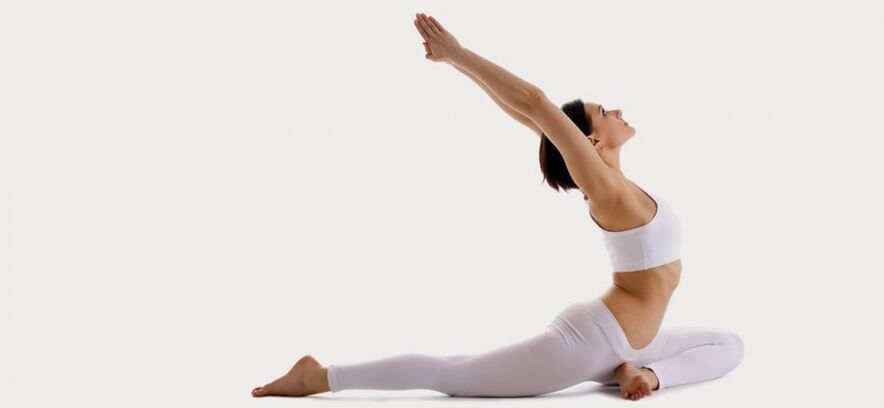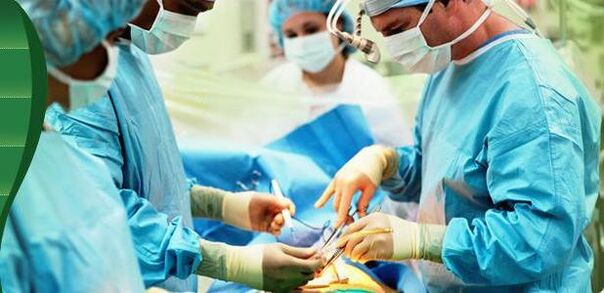
Unfortunately, osteochondrosis is already a common occurrence for people over 30 years old. Degenerative-dystrophic changes in the intervertebral discs and bones of the spinal column most often occur due to a passive lifestyle, malnutrition, extra pounds, hard physical work, etc. The disease manifests itself with severe symptoms at stages 2-4, when the structure of cartilage tissue is completely restoredwon't work anymore. Complications of osteochondrosis (protrusions, herniated discs, osteophytes, etc. ) can lead to a decrease in the quality of life, disability.
Timely treatment of osteochondrosis increases a person's chances for a full life. It is recommended to start therapy in the early stages of its development. To stop the development of pathology and improve the general state of health, it is necessary to carry out a whole range of measures: medication, exercise therapy, physiotherapy, manual exposure. Surgical treatment is carried out only in advanced cases, when complications are already present.
Characteristics of the disease
Osteochondrosis of the back begins with the destruction of the intervertebral discs. Under the influence of negative factors, the discs compress the cartilage lining, violating the integrity of its outer shell. The height of the disc decreases, it gradually collapses, then the pathology spreads to the tissues of the vertebrae.
There are many factors influencing the development of osteochondrosis of the spine:
- Prolonged sitting in the wrong position.
- Passive lifestyle.
- Overweight.
- Hard physical work.
- Back injury.
- Frequent nervous disorders.
- Wrong nutrition.
- Hypothermia.
- hereditary predisposition.
- Wearing shoes with heels, pregnancy in women, etc.
Reference. At stages 1 - 2, osteochondrosis can still be cured.
Doctors distinguish 4 stages of osteochondrosis:
- Grade 1 - cracks appear on the fibrous ring, the height of the disc decreases. There is discomfort in the affected area, the back gets tired faster.
- Grade 2 - the height of the disc continues to decrease, the muscles, ligaments sag, the mobility of the vertebrae increases. There is pain, especially after physical exertion.
- Grade 3 - the discs are slightly displaced, protrusions appear, the likelihood of subluxations or arthrosis of the joints of the spine increases. A pronounced pain syndrome appears, mobility is limited, sensitivity is impaired in the damaged area.
- Grade 4 - osteophytes appear on the vertebrae, so the body stabilizes the spine. Bone growths compress the nerves, injure the vertebrae, and increase the risk of fibrous ankylosis (fusion of the joints of the spine).
Important. Osteochondrosis can affect the cervical, thoracic, lumbar segments of the spine.
The disease of the cervical region is manifested by pain in the neck, upper limbs, cephalgia (headache). In addition, dizziness, hearing and vision disorders, etc. may occur.
Thoracic osteochondrosis is easily confused with heart disease, since the pain syndrome is localized in the chest area.
Symptoms of lumbar osteochondrosis - aching pain, limited mobility, aches, impaired sensitivity of the lower body.
The clinical picture of osteochondrosis is diverse, so you should not make a diagnosis yourself. See a doctor if you have any suspicious symptoms.
The scheme of treatment of osteochondrosis
In most cases, when detecting osteochondrosis, conservative methods are used. It is important to conduct a comprehensive treatment to get rid of pain, normalize the functionality of the spine and prevent complications.
The treatment regimen for osteochondrosis is as follows:
- Limitation of physical activity.
- Taking medications.
- Physiotherapy procedures.
- Physiotherapy.
- Massage.
- Manual therapy.
- Stretching of the spine.
It is possible to cure osteochondrosis only by combining the above methods. The treatment plan for each patient is drawn up separately by a doctor, taking into account the degree of the disease, age, and characteristics of the organism.
Effective treatment will help get rid of the symptoms of osteochondrosis in 1 to 3 months. Then maintenance therapy is carried out for 12 months. This will help to consolidate the results, prevent relapses.
It is possible to treat chondrosis of the back (stage 1 of osteochondrosis) without medication. The patient can perform physiotherapy exercises, reduce the load on the damaged area of the back, use applicators (Lyapko roller, Kuznetsov's iplicator), improve nutrition, give up bad habits.
Medications
It is treated with medications recommended for exacerbation of osteochondrosis. Medications will help relieve pain, inflammation, improve blood circulation in the affected area, and normalize motor activity.

With osteochondrosis, the following medicines are used:
- NSAIDs relieve pain and inflammation.
- Drugs with a vasodilating effect. They are used because of muscle tension, blood vessels narrow to expand their lumen and improve blood circulation.
- Muscle relaxants relax spasmodic muscles, normalize blood flow, relieve pain, improve mobility, and accelerate tissue repair.
- Chondroprotectors stop the destruction of the cartilage lining.
- Psycholeptics based on herbal or synthetic components soothe or reduce emotional stress without causing a hypnotic effect.
- Preparations based on B vitamins accelerate the recovery of damaged nerve fibers.
All these medicines help fight chronic osteochondrosis, but they can only be taken for medical reasons.
Opioid non-narcotic analgesics are used to relieve severe pain in the acute period of the disease. Glucocorticoids are used for the same purpose. However, these medicines negatively affect the body, so they can be taken as a last resort.
In addition to tablets and injections, during exacerbation of osteochondrosis, creams and gels with a locally irritating and warming effect are used.

Physiotherapy
Complex therapy of osteochondrosis is always complemented by therapeutic exercises. However, exercises for different parts of the spine are different.
In order not to overload the neck, other muscle groups should also be involved during classes. The workout begins with a warm-up and ends with relaxation exercises.
Complex for cervical osteochondrosis:
- Lie on your back, raise your head, fix for 5-7 seconds.
- Do not change the starting position (IP), put your hands on your shoulders, rotate your elbows in different directions.
- IP is the same, alternately raise your hands above your head, tearing off one, and then the second shoulder blade from the floor.
- Press the back of your head to the floor, fix for 4 seconds.
- Connect the shoulder blades, linger for 5 seconds.
- Roll over on your side, lean your head on your hands, raise your free limb with your head, fix for 4 seconds. Repeat for the other side.
- Lie on your stomach, put your hands on the back of your head, raise your head, fix for 4 seconds.
If you experience severe pain and dizziness, stop exercising and visit a doctor.
Reference. Thoracic osteochondrosis is less common than cervical or lumbar, since this is the least mobile department. In addition, it is strengthened by muscles and ribs.
Exercises for lesions of the thoracic segment of the spine:
- Lie on your back, bend your knees, press them to your chest with your hands, slightly lift your lower back off the floor, tighten your abdominal muscles, hold for 5 seconds.
- SP the same, raise your arms, straighten your legs, understand the opposite arm and leg, fix. Repeat for other limbs.
- Roll over on your stomach, spread your arms to the sides. Lift your hands and head off the floor, fix for 3 seconds.
- Get on all fours, raise your head, bend your back while inhaling, lower your head while exhaling, round your back.
Move smoothly, avoid sudden movements.

For the treatment of lumbar osteochondrosis, the following exercises are used:
- Lie on your back, alternately pull your knees to your chest.
- PI the same, take aside the right arm and leg, and then the left limbs.
- Put your hands behind your head, tear it off the floor, at the same time pull your socks towards you.
- Bend your legs at the knees, stretch your right knee to your left foot, and then vice versa.
- Perform the exercise "Bicycle" back and forth.
- Roll over on your side, swing your leg up.
- PI the same, pull your knees to your chest.
- Get on all fours, take turns moving your hands to the sides.
These exercises help stretch and relax tense muscles, increase blood circulation and lymph flow.
There are many more exercises. To make a complex that suits you, consult a doctor.
Physiotherapy procedures
Physiotherapy helps relieve pain, reduces inflammation, improves blood circulation and trophism.
In the treatment of osteochondrosis, the following physiotherapeutic procedures are used:
- Electrophoresis with drugs helps to relieve pain in the presence of neurological disorders.
- Electrotherapy enhances blood circulation, tissue nutrition.
- Laser therapy relieves inflammation, anesthetizes, accelerates tissue healing, activates biological processes in nerve tissues.
- Shock wave therapy improves local blood circulation, metabolic processes, reduces swelling, pain.
- Detensor therapy - traction of the spine under the weight of its own body weight. Helps to get rid of excruciating pain syndrome.
- Balneotherapy is a complex of procedures using fresh, mineral or sea water. After a course of treatment, pain is relieved, blood microcirculation improves.
In addition, diadynamic therapy, amplipulse therapy, ultrasound, magnetotherapy, and the vibration method can be used for osteochondrosis.
Reference. Osteochondrosis is treated with bees, this technique is called apitherapy. During the procedure, bee venom is injected into biologically active points in order to increase the effect of complex treatment. Insect venom relieves pain, improves mobility, blood microcirculation, conduction through the nerve pathways, increases the elasticity of the intervertebral discs.
Manual therapy
In the treatment of osteochondrosis, the patient is shown not only massage, but also manual exposure (soft and hard).

With the help of massage, the specialist normalizes muscle tone, improves blood circulation, and restores the activity of nerve cells. The session begins with kneading and rubbing, these techniques help prepare the body for further exposure.
After a warming massage, the doctor proceeds to mobilization and automobilization. During the procedure, it gently acts on the joints of the spine, gradually increasing the amplitude. Automobilization consists in performing movements by the patient himself under the supervision of a doctor. These procedures help to increase the interarticular gap, reduce blood stasis in the veins, and improve trophism.
To restore the correct position of the displaced vertebrae, the doctor proceeds to the manipulation technique. He performs sharp and fast movements in the affected areas, setting the vertebrae in their usual place. It helps to relieve pain, muscle spasm, improve mobility.
Attention. Manual therapy for osteochondrosis can cause serious complications (fracture, displacement of a vertebra, damage to nerves, blood vessels, ligaments or muscles). To prevent this from happening, you need to find an experienced specialist.
Hardware treatment and orthopedic devices
Devices for the treatment of osteochondrosis can be used at home, but only after the approval of the doctor.
In addition, for the health of the back, the patient can use orthopedic devices. A special pillow or roller helps to unload the neck and lower back, it is used during rest or in transport. To support the physiological curves of the neck, a medical collar is used. Posture correctors, corsets improve posture, unload the thoracic, lumbosacral segment of the spine.
Reference. You can wear corsets and correctors for no longer than 2-3 hours a day. This mode will help to avoid weakening the muscles.
A special belt is used for the lower back. It can be worn at work, while playing sports.
Folk remedies
Complex therapy can be supplemented with effective folk remedies. However, cervical, thoracic and lumbar osteochondrosis are accompanied by different symptoms, so different recipes are used for their treatment.
Folk remedies for the treatment of the neck:
- Hold the leaves of burdock over the steam for 5-10 minutes, attach them to the neck, fix with a bandage. You can also soak gauze in a decoction of burdock and use it as a compress.
- Make a decoction of birch leaves, apply a compress to the affected area.
- Peel the horseradish root, squeeze out the juice, mix with vodka (1: 1), rub the neck.
- Pour 250 g of needles into 1 liter of boiling water, leave for 30 minutes. Drink twice a day after a meal.
Also, with cervical osteochondrosis, you can take baths with coniferous decoction.
If the thoracic region is affected, use the following recipes:
- Mix dandelion root, mint, birch buds, coriander in equal proportions. Pour 100 ml of boiling water 3 tbsp. l. collection, cook for 5 minutes over medium heat. Add 75 g of butter and sunflower oil to the warm mixture, cook for another 20 minutes. Rub the warm ointment on your back.
- Grind black radish or horseradish, squeeze out the juice, rub the affected area.
- Steam wormwood or flaxseeds, place them in a cloth bag, apply to the thoracic back.
At home, you can knead your back with a tape massager.
If the lumbosacral region is affected, use the following remedies:
- Drink decoctions of lingonberry leaves, thyme, hop cones, cinquefoil.
- Apply a compress of horseradish juice or raw potatoes.
- Rub the lower back with an ointment of 200 g of melted lard mixed with beeswax and marshmallow roots.
Also, with lumbar osteochondrosis, you can wear a woolen belt, which has a warming effect.
Before using any folk remedies, consult your doctor.
Surgical intervention
The operation is prescribed in the presence of complications, which are accompanied by numbness of the limbs, severe prolonged pain, involuntary urination or defecation. Also, surgical treatment is necessary for cauda equina syndrome (compression of the nerve endings of the lower spinal cord).

Surgical techniques will help eliminate the cause of pain and stabilize the spine:
- Facetectomy is the removal of facet joints that compress the nerve bundles.
- Foraminotomy - an increase in the lumen of the root canal by removing the osteophyte. After the procedure, the nerve is released from infringement.
- Laminectomy is the removal of the back of a deformed vertebra that is compressing the spinal cord.
- A laminotomy is used to widen the opening through which the nerve roots pass.
- Discectomy - removal of the affected disc or part of it with an intervertebral hernia. This is a minimally invasive endoscopic operation, after which the patient recovers faster.
- A corpectomy is the removal of the entire vertebra and the discs that are adjacent to it. The free space is then filled with a bone graft.
Spinal fusion (fusion of the vertebrae) is performed to avoid destabilization of the spine. Also, special screws, rods, plates are used to fix the vertebrae.
Attention. After the operation, there is a risk of complications: damage to the spinal cord, nerve bundles, infection of the affected area, urination disorders, etc. Therefore, surgical intervention is performed only in extreme cases.
Rehabilitation after surgery can take several months. During this period, the patient must give up physical activity, bad habits, follow the recommendations of doctors.
Reviews
According to patients, it is very difficult to cure osteochondrosis completely. Those who carried out complex therapy at an early stage of the pathology got rid of pain and improved their physical form. Patients who sought help at advanced stages of the disease still suffer from relapses of osteochondrosis.
First review, female, 42 years old
"I was diagnosed with osteochondrosis of the neck of the 2nd degree. At first she was treated with analgesics and muscle relaxants (injections, tablets), and then she took a chondroprotector and did gymnastics. In addition, she visited a manual specialist. After a few months, the pain disappeared. I plan to take the course again to consolidate the result. I do gymnastics every day.
Second review, female, 38 years old
"I started having lower back pain about 2 years ago. When I couldn't take it anymore, I went to the doctor. I was diagnosed with osteochondrosis of the neck, the rheumatologist prescribed medications, physiotherapy, massage. Approximately 2 weeks after the start of treatment, the symptoms almost completely disappeared. Now I do gymnastics, I go to the pool for prevention.
Third review, female, 41 years old
"I was diagnosed with osteochondrosis of the neck, as well as a hernia of C5-C6. I took medications, went for a massage, to an osteopath, and have been doing gymnastics regularly for 2 years. However, nothing helped, the pain only disappeared for a while, plus my hands began to go numb. The doctor prescribed a discectomy, after the operation the condition improved, but not for long. I think you will have to be treated throughout your life. "
The most important
As you can see, osteochondrosis requires long-term treatment and self-discipline. Therapy should be comprehensive: medicines (in the acute period), exercise therapy, physiotherapy, massage, manual exposure. The patient must change his lifestyle, regularly perform gymnastics, give up bad habits, eat right, use orthopedic devices. You can supplement therapy with medical devices and folk remedies, but only after the approval of the doctor. In the presence of complications, an operation is performed, followed by a long rehabilitation. The patient must strictly follow the recommendations of doctors in order to speed up recovery.



















